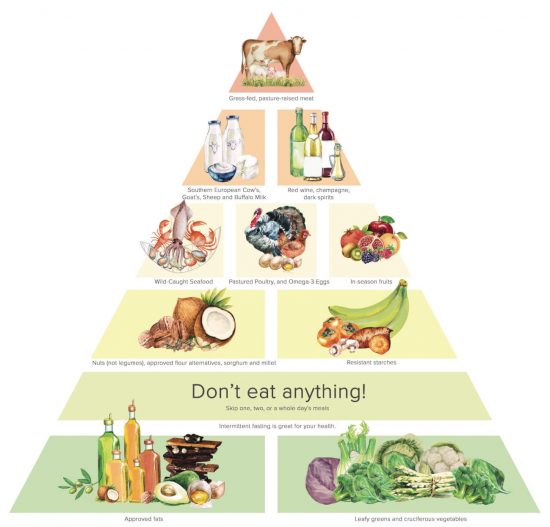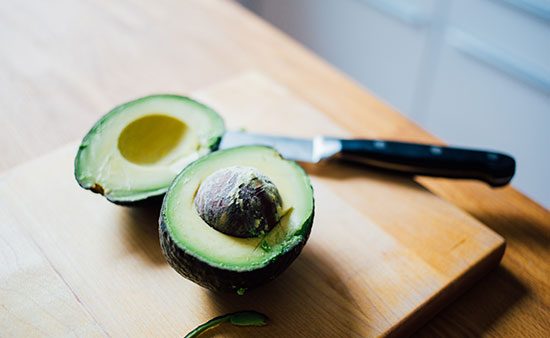When it comes to health, one of the biggest, yet most common mistakes people make is only focusing on weight loss. That’s why diet pills exist, why liposuction is even a thing, and why fads like the Atkins Diet skyrocketed in popularity (who cares if you’re putting endless amounts of cholesterol and saturated fats into your body – you look great). But almost without fail, people return to their normal habits – and have nothing left to show for the torture they put their body through except irreparable damage on their health and wellness.
Do you go paleo? Ketogenic? Plant-based? How do you find the diet that won’t just help you shed pounds, but improve your overall health? And how do you find the path that will lead to real, lasting change?
This is exactly where functional medicine comes in. Functional medicine looks at the body as one integrated system in which everything is connected. And rather than treating symptoms, functional medicine seeks to identify and address the root causes. So your weight, for example, is not treated as an isolated issue, but as a symptom of an underlying health problem.
To help you better understand how the functional medicine approach to wellness can help you improve both your health and your weight, we’re bringing in our resident medical and wellness experts: Dr. Mark Hyman and Dr. Steven Gundry.
Dr. Hyman is a practicing family physician, a 10-time #1 New York Times best-selling author, and an internationally recognized leader, speaker, educator, and advocate in his field. He is the Director the Cleveland Clinic Center for Functional Medicine. He is also the founder and medical director of The Ultra Wellness Center, chairman of the board of the Institute for Functional Medicine, a medical editor of The Huffington Post, and was a regular medical contributor on many television shows including CBS This Morning, Today Show, Good Morning America, CNN, and The View, Katie and The Dr. Oz Show. Dr. Hyman is also a guest speaker at Tony’s Unleash the Power Within.
Dr. Gundry has been working in medicine for over 40 years. He is best known for his work as a cardiologist and heart surgeon. And currently, he is focusing on teaching people how to avoid surgery with his unique version of human nutrition – improving health, happiness, and longevity by making simple changes to the diet. Dr. Gundry serves as Director and Founder of the International Heart & Lung Institute as well as the Center for Restorative Medicine in Palm Springs and Santa Barbara. And he too is a guest speaker at Unleash the Power Within.
We’ve outlined both Dr. Hyman’s 10-Day Detox Diet, and Dr. Gundry’s Food Pyramid – each of which are focused on healing and strengthening your body. It’s time to stop counting calories and to start focusing on your health. Because when you focus on health, you can create a sustainable path to lifelong wellness, and ultimately, achieve the body you deserve.
THE 10-DAY DETOX
Dr. Mark Hyman’s 10-Day Detox Diet is scientifically proven program that helps you make the shift towards ultimate health and wellness. In just 10 days, not only can you lose up to 10 pounds, you can also help prevent or even alleviate chronic health issues like type 2 diabetes, asthma, joint pain, digestive problems, autoimmune disorders, headaches, brain fog, allergies, acne, eczema and even sexual dysfunction. And while this diet is intended for 10 days, it can be modified after that allotted time to be a more sustainable lifestyle. Because this diet takes a different approach to food: rather than focusing on how much you eat, the program centers around what you eat – the quality of the food and the composition.
So let’s get into it. First, you need to prep for 2 days leading into your 10-day detox. During this phase, you’ll focus on:
- Low-toxicity animal or plant-based proteins
- High-quality fats and oils
- Low-toxicity vegetables
- Low-toxicity fruits
- Eliminating all sweeteners
- High-quality, full-fat dairy
- Whole-kernel grains
- Eliminating pasta and all flour-based products
- Purified waters, unsweetened herbal teas
Now for the detox. This chart stipulates what you can eat and the recommended portion sizes. Because not all calories are created equally – different foods trigger different biochemical responses in the body (hormones, neurotransmitters, immune messengers). The key is to focus on quality, not quantity. Strive to consume high fiber, high quality proteins and fats that are low in starches and sugars. This will help your body shift from fat storage mode to fat burning mode. And it helps prevent most chronic ailments from heart disease to dementia. For a more detailed roadmap of this 10-day detox, download this pdf. And for some delicious ideas of what you can whip up, check out these recipes.
THE NEW FOOD PYRAMID
When is the last time you’ve seen a food pyramid? Do you remember those loaves of bread and mountains of pasta forming the foundation? We were conditioned to believe that cereal, milk and ham were the right path to nutrition. But it shouldn’t come as a surprise that eating half a loaf of white bread a day isn’t going to get you the body you want. Especially since most bread products are filled with preservatives and additives like food dyes or high-fructose corn syrup.
This is exactly why Dr. Gundry has rewritten the food pyramid.
Good Fats, Approved Oils, Cruciferous Vegetables
The first pillar of the pyramid consists of good fats and approved oils. Dr. Gundry maintains that these are the most important foods in our diet and they’re the foods we should be eating most. In fact, these are the foods of which we can allow ourselves to consume an unlimited supply. This includes:
- Extra virgin olive Oil, avocado oil, walnut oil, sesame oil, and coconut oil
- Avocados
- Romaine, red & green leaf lettuce, kohlrabi, mesclun (baby greens), spinach, endive, butter lettuce, parsley, fennel, seaweed/sea vegetables
- Broccoli, cauliflower, brussel sprouts, bok choy, cabbage, asparagus, and radishes
Skipping a Meal
The second tier of the pyramid introduces the idea of intermittent fasting. Our bodies actually need to go without food from time to time. For this reason, we have to give our bodies time to process and digest. This really is one of the keys to great nutrition and that’s the reason it’s the second pillar of the pyramid.
Nuts, Flour Alternatives, Lectin-free Grains
This is where we can satisfy our grain and bread cravings. And, it’s okay to indulge in this category daily, but make sure to limit consumption of these foods to small portions per meal. And, there are only certain kinds of nuts on the list – legumes, like peanuts and cashews should be completely avoided. Instead, stick to the following:
- Macadamia
- Walnuts
- Pistachios
- Pecans
- Coconut
- Hazelnuts
- Chestnuts
When it comes to flour alternatives, stick to coconut flour or almond flour. Avoid white flour, whole wheat flour and processed flours at all costs. Processed flour has been completely stripped of all nutritional value. And when it comes to grains, stick to sorghum and millet, which are both lectin-free and carry a number of health benefits like fiber, antioxidents and minerals.
Resistant Starches
Resistant starches (like green bananas and plantains) make the list because they feed friendly bacteria. Turns out, there are about 100 trillion bacteria living in each of our guts. Good bacteria actually help our bodies digest what we eat, deliver vitamins (like B12 and K2), lose weight and eliminate disease-causing pathogens. So, we want to make sure we feed that good bacteria. Another reason we want to include resistant starches in our diets is because they can break down fat and reduce fat storage. Again, with resistant starches, it’s okay to eat them every day, but limit the quantity with each meal.
Seafood, Poultry and Eggs
If you are going to consume animal-based proteins, then focus on wild caught seafood, pastured poultry and omega-3 eggs.
Wild Caught Seafood: Fish is full of important nutrients like protein and vitamin D. And, it’s also a wonderful way to get omega-3 fatty acids, which have numerous benefits like helping with various inflammatory health issues. Just make sure the seafood that ends up on your plate is wild-caught. Among other things, farm-raised fish are often injected with antibiotics or even treated with pesticides.
Pastured Poultry: Pastured poultry can be a great source of protein. But, pastured is not the same thing as free range or organic. Often, free range chickens are never shown the light of day. And, they’re fed corn and soy. So, there’s only one type of poultry that’s okay here – pastured.
Omega-3 Eggs: These can provide certain health benefits. For instance, research shows they lower cholesterol. So, it helps if we make sure Omega-3s are the eggs that end up on our tables. Also, these are foods we want to consume in limited portions each day.
Fruit
Eating fruit in season was a great thing for our ancestors, because it allowed them to fatten up for the winter months. But now, we can get fruit any day of the year. So, we have to be sure to consume it in moderation.
There are a few fruits that are great year round, such as banana, mango, and papaya, but they’ve got to be eaten while they’re still green. That is because they have not yet expanded their sugar content. And the good bacteria in our guts love to feast on these green fruits.
Dairy
If you want to consume dairy, stick to southern European cow’s milk, goat’s milk, sheep’s milk and buffalo milk. Though consider this an indulgence and only consume in moderate quantities.
The problem with the typical cow milk you get at the store is that it contains casein A-1. Casein A-1 is converted to protein called beta-casomorphin which can prompt an immune attack on the pancreas of people who consume milk from from these cows or cheeses made from it. This can cause some serious health concerns.
Grass-Fed, Pasture-Raised Meat
Dr. Gundry strongly recommends that only 4 ounces of daily protein come from grass-fed or pasture-raised meat. Why grass-fed and pasture-raised? Well, for starters they have more omega-3 and fewer omega-6 oils than animals fed grains and soy. But, we should still be careful not to over-consume as they still contain Neu5Gc – a type of sialic acid found in most mammals that human bodies cannot process. So, while the following meats are acceptable, please remember they should only be consumed in limited quantities:
- Bison
- Wild Game
- Venison
- Boar
- Elk
- Pork (humanely raised)
- Lamb
- Beef
- Prosciutto
Red Wine, Champagne, Dark Spirits
In order to really separate the new and improved food pyramid from the dated food pyramid we all grew up with, Dr. Gundry included some spirits. Red wine in moderation – meaning 1 to 2 times a week – can actually help your health. But it’s also important to understand that the polyphenols in red wine might be connected to reduced risk of cardiovascular diseases and heart health issues.
Learn more about Dr. Gundry’s diet principles and check out delicious recipes that adhere to the new food pyramid.








